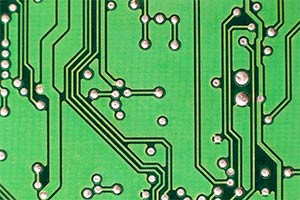In this course, you will learn about an introduction to the encoder and the different class of digital circuits, as well as a latch made up of NOR gates. The master-slave configuration of the JK flip flop, and a simple circuit consisting of various JK flip flops will also be covered in this course. Then, you will learn about a bi-directional shift register, and also, a few specific counter circuits.
Then, this course will teach you about the design of synchronous counters, as well as a simulation of synchronous counter. You will also learn about the 555 monostable multivibrators, and also DAC using binary-weighted resistors. Lastly, the course will teach you about the R-2R ladder network, and also, counting ADC or digital ramp ADC.
This course is helpful for learners who want to learn about the different classes of digital circuits, and how gates are used. Also, this course will be beneficial for learners who want to learn about the design and simulation of synchronous counters. Begin this course now to understand how JK flip-flops can be configured and conversion of digital circuits to analog circuits.
What You Will Learn In This Free Course
View All Learning Outcomes View Less All Alison courses are free to enrol, study, and complete. To successfully complete this Certificate course and become an Alison Graduate, you need to achieve 80% or higher in each course assessment.
Once you have completed this Certificate course, you have the option to acquire an official Certificate, which is a great way to share your achievement with the world.
Your Alison certificate is:
- Ideal for sharing with potential employers.
- Great for your CV, professional social media profiles, and job applications.
- An indication of your commitment to continuously learn, upskill, and achieve high results.
- An incentive for you to continue empowering yourself through lifelong learning.
Alison offers 2 types of Certificate for completed Certificate courses:
- Digital Certificate: a downloadable Certificate in PDF format immediately available to you when you complete your purchase.
- Physical Certificate: a physical version of your officially branded and security-marked Certificate
All Certificate are available to purchase through the Alison Shop. For more information on purchasing Alison Certificate, please visit our FAQs. If you decide not to purchase your Alison Certificate, you can still demonstrate your achievement by sharing your Learner Record or Learner Achievement Verification, both of which are accessible from your Account Settings.











 Avg. Hours
Avg. Hours  Contains Video
Contains Video  CPD Accredited
CPD Accredited 
 Total XP:
Total XP: 
 Knowledge & Skills You Will Learn
Knowledge & Skills You Will Learn 







